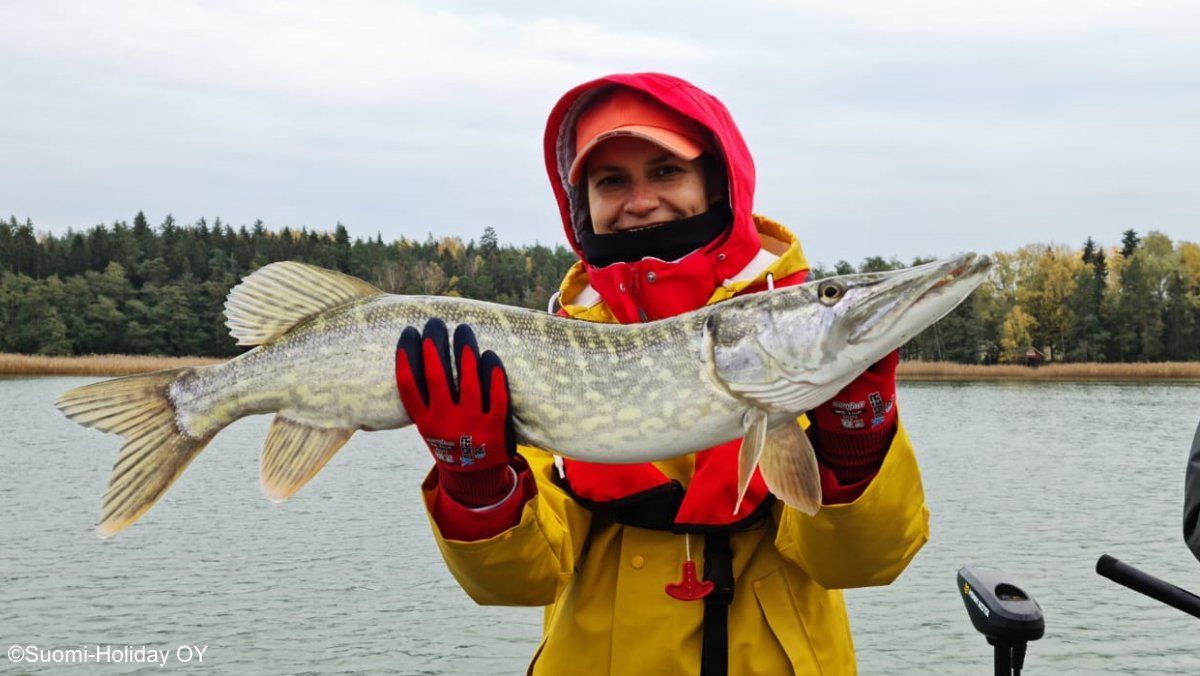Best Time to Fish in Finland by Season
When Is Fishing at Its Best?
Finland offers excellent fishing all year round. The key is choosing the right time, depending on your skill level. Spring feeding frenzies, summer sunsets, autumn trophy hunts, and winter ice fishing all bring their own unique charm. Discover when and where the bite is hottest, and plan your trip for maximum success.

Spring: Active Bite After Ice-Out
Spring is an excellent time for fishing in Finland. After the ice melts (late April to May), fish become more active and less selective about lures. Many species move into shallow waters in preparation for spawning, making them easier to catch. Fishing is especially productive during the daytime and evening, when the sun warms the water.
Summer: Early Morning and Late Evening Are Key
In summer, the best fishing times are early morning and evenings after 7 p.m.
During hot weather, fish retreat to deeper, cooler layers of water and become less active. However, many species return to the surface in the evening and at night. Spinners and spoons are particularly effective during this period.
Autumn: Prime Time for Trophy Fishing
Autumn is another great season for fishing in Finland. As the water temperature drops, fish return to the shallows and become more active. On clear autumn days, you can expect good catches throughout the day. Pike, in particular, bite aggressively as they prepare for winter.
Winter: Ice Fishing and Seasonal Challenges
Ice fishing is a popular winter activity in Finland. Species like perch and whitefish remain active under the ice. However, cold temperatures and short daylight hours can make fishing more challenging. Always exercise caution on the ice and stay informed about weather and ice conditions.
How Weather Affects Fishing
Weather conditions greatly influence fish activity:
- Before a weather improvement: fish become more active.
- After rain or overcast periods: fish tend to feed aggressively.
- During storms: fishing is dangerous and should be avoided.
- Cold northern winds: usually reduce fish activity.
- Warm southern winds: often lead to better bites
Time of Day and Fish Activity
Fish activity changes throughout the day:
- Early morning and evening: fish move to shallow areas in search of food. These are typically the most productive times.
- Midday: during hot weather, fish tend to go deeper and become less active. Small fish, however, often stay active. In spring and autumn, daytime fishing can be very effective, especially with small lures.
- Night: some species, like zander (pike-perch), are more active at night.
Wind and Its Impact on Fishing
Wind plays a significant role in fish behavior:
- Strong wind: brings oxygen and food, often drawing fish to the downwind side of a lake.
- Cold northern wind: typically reduces fish activity.
- Warm southern wind: generally improves bite conditions.
Using brightly colored or noise-producing lures can increase your chances in windy weather.

